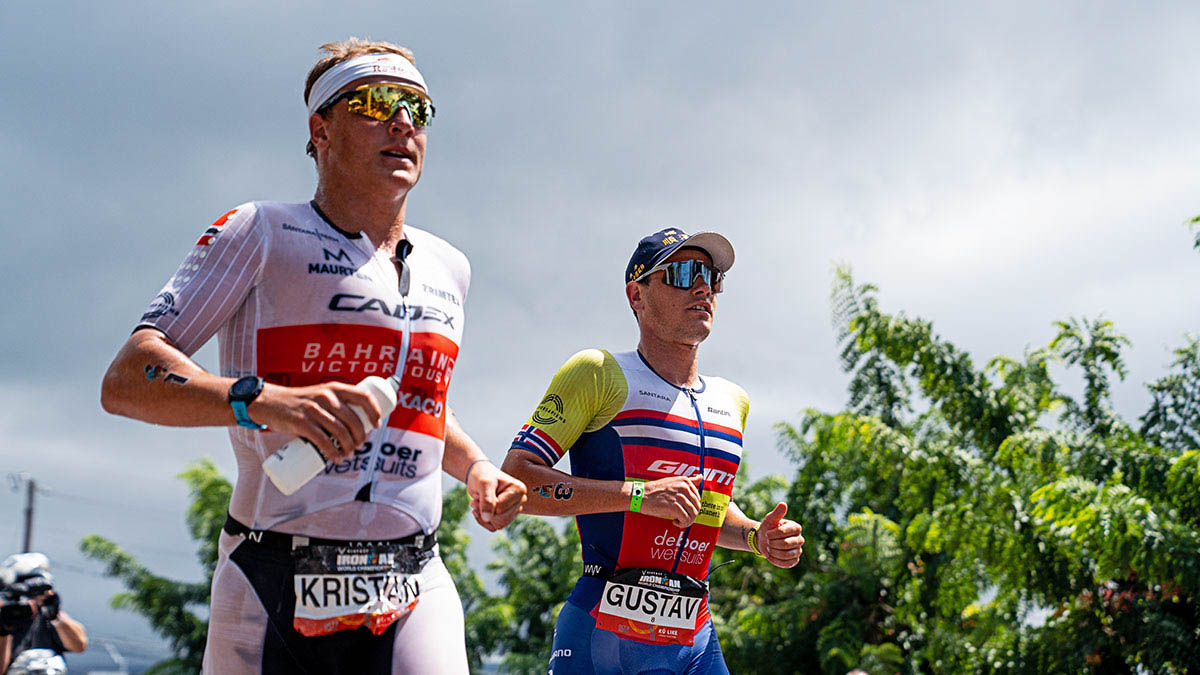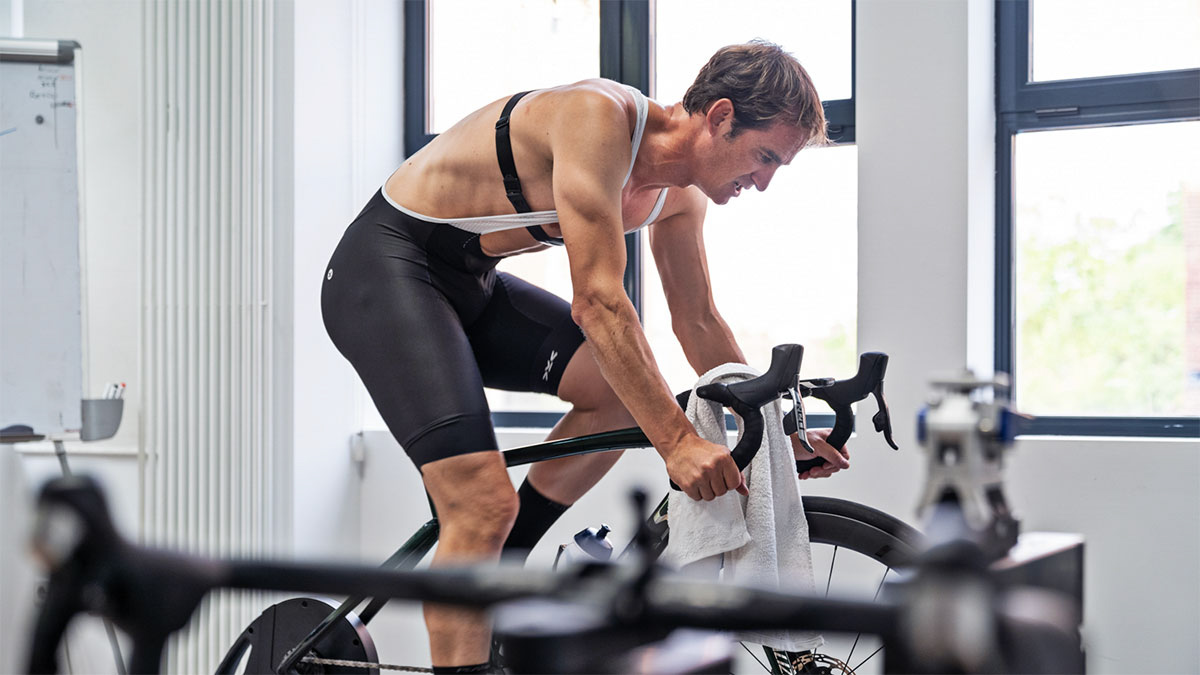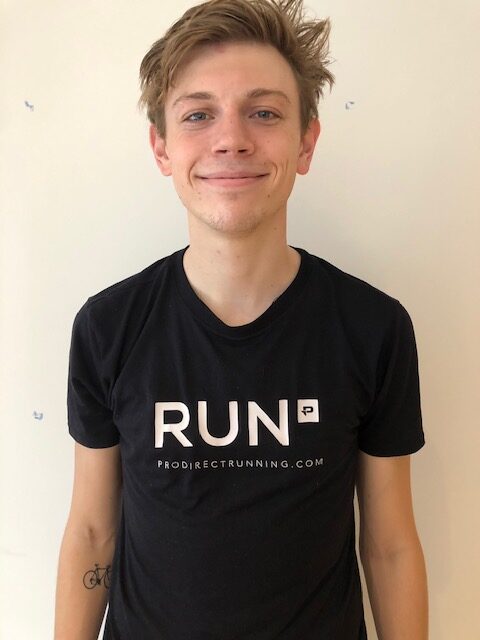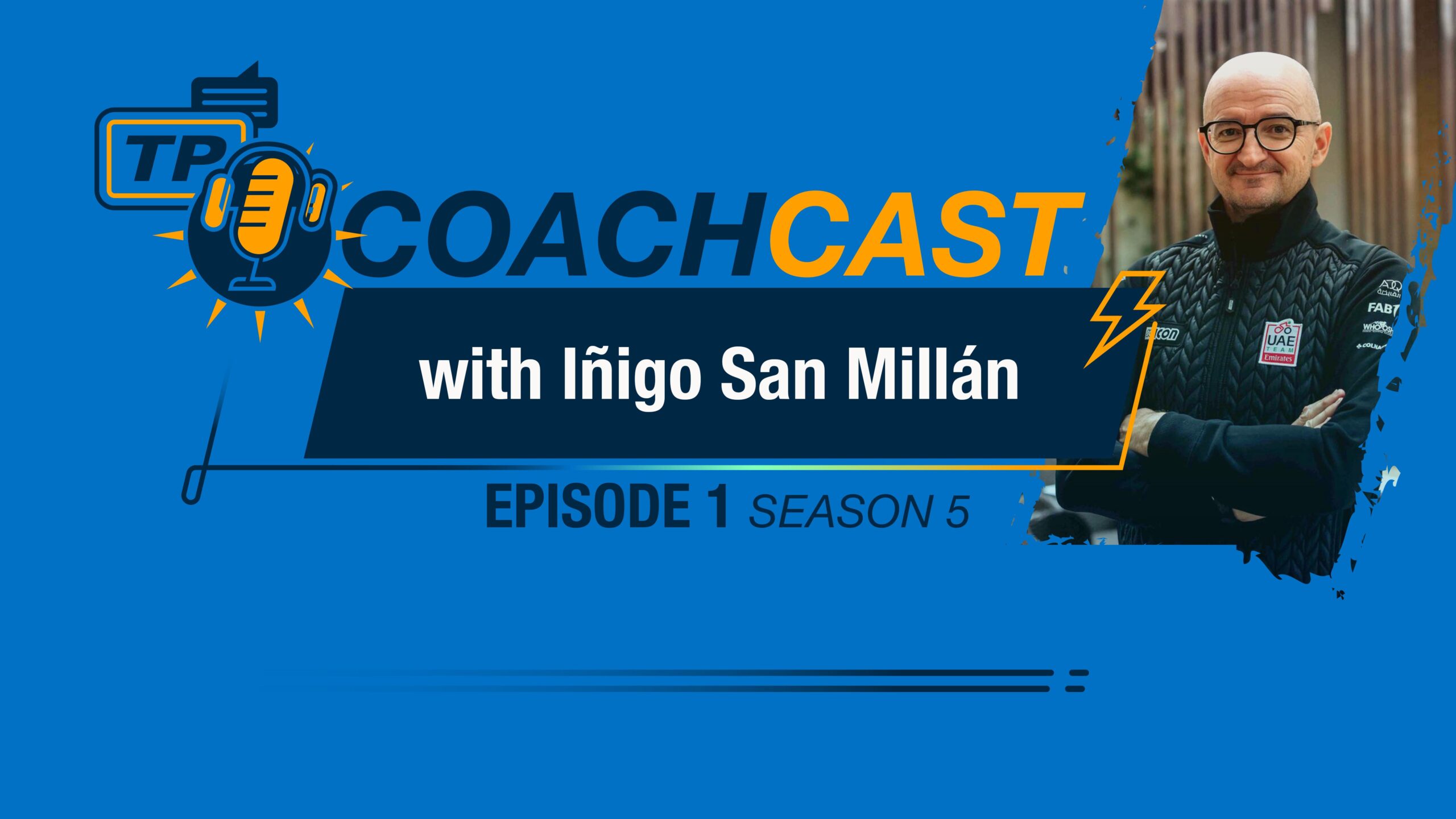Ever since Cambridge physiologists Walter Fletcher and Frederick Hopkins found that fatigued frogs’ legs contained three times more lactic acid than they did at rest in the early 1900s. Fast forward to modern perception, and most consider it a given principle that when lactate rises to and beyond a certain level, it will cause an athlete to fatigue.
Lactate has been labeled a “waste product” that’s undesirable at best and the enemy at worst, something so feared that there’s an entire methodology — lactate threshold training — designed to improve people’s tolerance of it. And yet all these years later, there’s evidence to suggest that while lactate is involved in performance limitation, it’s not the root cause of fatigue and can actually be utilized to create energy.
In this post, we’ll consider this perspective, see how it informs elite athletes’ training, and provide suggestions for your clients.
Viewing Lactate as Fuel, Not Foe
In a January 2023 review published in the Journal of Bioscience and Bioengineering, Korean researchers stated that “the perception that lactate is equivalent to fatigue should no longer exist.”[i] Read that again. This statement comes across as highly controversial, given that lactate has traditionally been viewed as one of the most significant limiters of endurance performance. So what is this particular paper getting at? The authors explained that “lactate production is closely correlated with energy metabolism.” They also pointed out that while lactate has become synonymous with lactic acid, the former actually “delays ongoing metabolic acidosis.”
Let’s look at each of these statements in turn. First, we need to know-how lactate is utilized as an energy source. In a YouTube deep dive on lactate, Dr. Andy Galpin, a muscle physiologist at Cal State Fullerton (and, in full disclosure, one of the co-authors of my book Unplugged), explained that when an oxygen molecule binds to the hydrogen ion attached to lactate, the latter can be converted back into pyruvate. “Once it’s in pyruvate form, if we can ship it to mitochondria, we’re often running through the Krebs cycle and we’ve generated a bunch of ATP,” Galpin said.[ii] This ATP is the body’s preferred source of ready energy, which means the muscles quickly utilize it.
Galpin credited George Brooks as one of the pioneers of a more nuanced view of lactate’s roles in the human body. In an interview with Dr. Rhonda Patrick, Brooks shared that lactate is also shuttled to the liver (where it’s used in gluconeogenesis to create glucose for fuel), heart and brain. During high-intensity exercise, lactate acts like a hormone to activate genes involved in 600 functions, including protein synthesis, muscle adaptation and the creation of new mitochondria.[iii]
Training Lactate in Old and New Ways
This new perspective on lactate doesn’t mean that your athletes should no longer try to delay reaching the stage at which their bodies exceed the lactate threshold. There will be a point when there’s too much lactate for the glycolytic system to shuttle or convert, spilling it into the bloodstream. It’s the attached hydrogen ions that alter blood pH until muscle function is compromised.
Researchers from the University of Utah believe that the “burn” sensation isn’t the result of lactic acid buildup as was previously assumed. Instead, it could be caused by the presence of lactate, ATP and protons, which at certain levels, cause the brain to send a signal to muscle nerve endings.[iv] They hypothesized that this is a self-protective mechanism designed to limit the damage. The key to delaying the activation of this process is to “train at your lactate threshold, slightly below, slightly above or maybe a combination,” Galpin suggested.
That being said, your clients should also try to condition themselves to utilize lactate as fuel more effectively. There are several ways to do this. First, incorporate the activities that use lactate-ATP sourced from lactate-derived pyruvate into your athletes’ programming. According to an article by Geoff Lecovin for the National Academy of Sports Medicine, “The phosphagen (ATP-PC) system harnesses ATP for highly intense activities lasting 10 to 30 seconds.”[v]
So short intervals on the road, bike, or rowing machine interspersed by rest periods of one to three minutes to allow for recovery between sets would be the order of the day. ATP is also the first fuel your body goes to during longer efforts lasting between 30 seconds and three minutes. So you should work such intervals into your clients’ training, again interspersing rest periods that will allow sufficient recovery to stay within prescribed pace ranges.
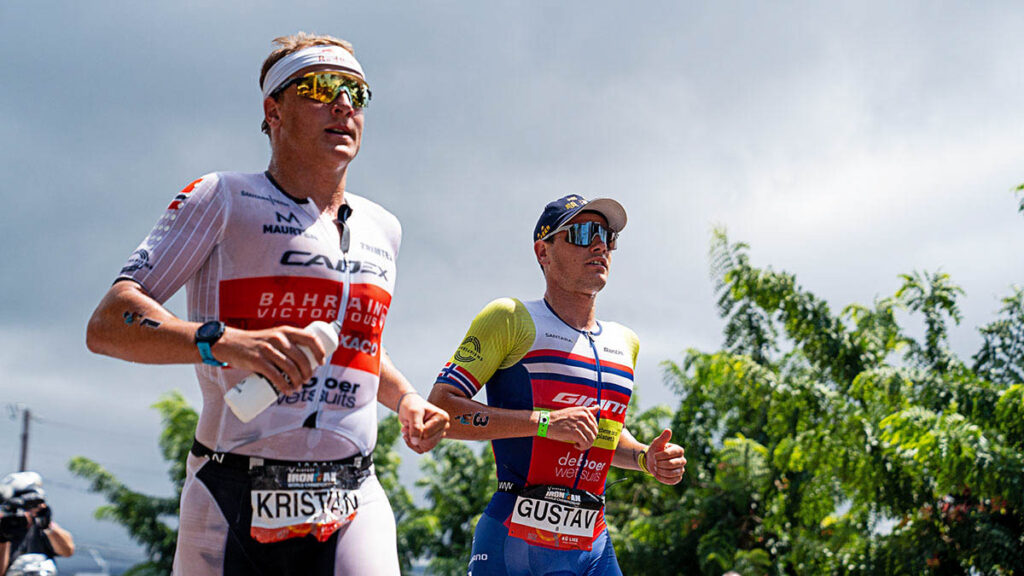
In a recent TrainingPeaks article, I detailed how the Norwegian training method is powering Kristian Blummenfelt, Gustav Iden and their teammates to unprecedented success in triathlon. One component of this approach is how Olav Bu and Arild Tveiten improve their athletes’ ability to shuttle lactate and convert it to energy. Typically, most coaches prescribe longer 20-to-30-minute pieces for their athletes’ lactate threshold training, increasing to as much as 60 to 80 minutes as they adapt. Setting this level could include heart rate zones and percentages of VO2 max that vary based on each athlete’s training age and fitness level. But the point is that it’s usually a continuous effort.
Not so for Blummenfelt, Iden and their training partners. Bu and Tveiten break down their athletes’ LT work into shorter intervals. For example, they might do six or eight sets of six to 10 minutes. Such intervals are performed at a slower pace than some pros might use so that they stay within a range that maximizes lactate shuffling and doesn’t compromise subsequent efforts, which is critical given how many two-a-days they do. Intervals are separated by one- to two-minute rest periods carefully calibrated to keep power levels up while limiting lactate buildup.
By the end of the workout, the athletes have performed more work than their competitors achieve during single, nonstop sessions without exceeding their lactate threshold. Throughout a season, this can lead to a greater accumulation of mileage at certain paces. The dividend on race day is an ability to keep the pace up in the run leg of Ironman events while their rivals are fading.
Keeping Lactate Levels Lower
At the base of the Norwegian method is plenty of distance work in Zone 2, which Iñigo San Millán stated is “the training zone eliciting the best results to improve lactate clearance capacity” in a TrainingPeaks post.[vi] Blummenfelt, Bu and the rest use frequent finger prick testing to ensure they’re not exceeding their coaches’ lactate targets during LT interval or steady state training. The aim is to keep lactate levels between 2.5 and 3.0 mmol/L during LT intervals, backing off the pace if it rises above that range and increasing speed if it’s below. That number could be below 1.0 mmol/L for longer, slower sessions.
As host Mikael Eriksson noted in a conversation with Tveiten in episode 223 of That Triathlon Show, this is lower than the 4.0 mmol/L level many coaches try to get their athletes to adhere to in shorter threshold sessions. Tveiten explained that most of the studies on threshold training have been conducted on amateur athletes, whose lactate tolerance is often different from that of elite competitors.[vii] This notion is supported by sports scientist Marius Bakken, who wrote in an article on the Norwegian method, “I’ve seen experienced world-class Kenyan runners with a value at the anaerobic threshold as low as 2.0 mmol/l.”[viii]
So if you utilize any lactate testing with your athletes, consider that the more experienced ones might have much lower lactate concentration values than you anticipated. This will lead to you potentially needing to alter their pace, power output and HR or VO2 max goals for any kind of lactate threshold training. The main changes might be going slower than they’re used to (you could use the example of Blummenfelt and Iden to convince them) even during intervals and avoiding the temptation to crush the last couple of minutes so that they keep lactate levels down.
Good enough for Ironman world champions, good enough for the rest of us. But maybe not for the frogs.
References
[i] Sungjun Lee et al., “Physiological Significance of Elevated Levels of Lactate by Exercise Training in the Brain and Body,” Journal of Bioscience and Bioengineering, January 2023, available online at https://pubmed.ncbi.nlm.nih.gov/36681523.
[ii] Andy Galpin, “What Lactate is & What it Actually Does,” YouTube, 2016, available online at https://www.youtube.com/watch?v=imEsdKxtVyU&ab_channel=AndyGalpin.
[iii] Rhonda Patrick, “Dr. George Brooks on Lactate Shuttle Theory, Relevance for Traumatic Brain Injury, & More,” Found My Fitness, December 3, 2014, available online at https://www.foundmyfitness.com/episodes/george-brooks.
[iv] Kelly A Pollak et al., “Exogenously Applied Muscle Metabolites Synergistically Evoke Sensations of Muscle Fatigue and Pain in Human Subjects,” Experimental Physiology, February 2014, available online at https://pubmed.ncbi.nlm.nih.gov/24142455.
[v] Geoff Lecovin, “Exploring Excess Post-Exercise Oxygen Consumption (EPOC): ‘Burn Baby Burn!’” National Academy of Sports Medicine, available online at https://blog.nasm.org/excess-post-exercise-oxygen-consumption.
[vi] Iñigo San Millán, “What is Lactate and Lactate Threshold,” TrainingPeaks, available online at https://www.trainingpeaks.com/blog/what-is-lactate-and-lactate-threshold.
[vii] Mikael Eriksson, “Arild Tveiten – Coach of Kristian Blummenfelt, Gustav Iden and Casper Stornes on Triathlon Training the Norwegian Way | EP#223,” March 2, 2020, Scientific Triathlon, available online at https://scientifictriathlon.com/tts223.
[viii] Marius Bakken, “The Norwegian Model of Lactate Threshold Training and Lactate Controlled Approach to Training,” MariusBakken.com, available online at https://www.mariusbakken.com/the-norwegian-model.html.



